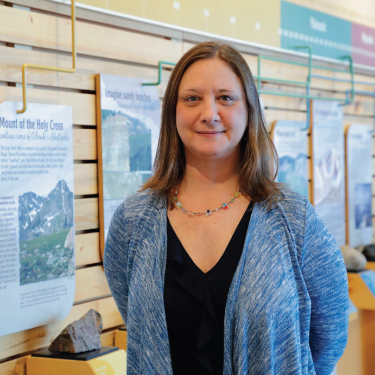Energy can neither be created nor destroyed; it can only be changed from one form to another. So says the all-powerful, all-governing, and all-encompassing First Law of Thermodynamics, also known as the Law of Conservation of Energy. There is a limited amount of energy in the world, and only a small portion of that energy is actually in a form that we can use. The forms that energy takes, and the transformations that it goes through, have dramatic impacts on living and nonliving things. This law is always relevant and important, but during the winter, it is critically important to organisms living in the cold.
Here in the Rocky Mountains, we have a great appreciation for snow and all of the recreation and adventure it offers. And many of us are guilty of having stopped for more than a moment to gaze at the perfectly stellar crystalline structures of snow – be it snowflakes falling delicately from the sky, or giant surface hoar crystals growing like feathers. Snow is fun and beautiful, these things we know, but it also has some amazing and very interesting physical properties.
When I first moved to Colorado, it quickly became apparent that sunglasses were an essential item. Snow is one of nature’s best reflectors; its crystalline surface turns back between 75-95% of the sunlight that strikes it. This means that only a small portion of the radiant energy from the sun is available to perform work within the snowpack. As the snowpack ages, however, it collects dirt and dust from the air, and its reflectivity is reduced, dropping as low as 45%. This short-wave radiation that does penetrate the snowpack, though, is converted to long-wave radiation, or heat, when it hits an object, and this heat is refracted back into the snowpack, now able to perform work like increasing temperature or sublimating crystals.
As good as snow is at reflecting short-wave radiation, it is also a nearly perfect absorber of long-wave radiation. In physics, a substance that absorbs all of the incident radiation that hits it is known as a “black body”, and snow is one of the best black bodies with respect to long-wave radiation. And because all natural objects emit some heat energy by virtue of their own molecular activity, snow is continually absorbing ambient energy. This phenomenon is what creates tree wells, or empty spaces around the base of trees, as the snow is melted (or sublimated) from the bottom up and from the trunk out by the long-wave radiation emitted by both the ground and the tree. This effect is magnified even more as the short-wave radiation reflected by the surface of the snow is absorbed by the tree and converted into heat, or long-wave radiation.
In addition to absorbing available heat energy, the snowpack also efficiently radiates heat back to its environment. During the cold night, when incoming radiation is greatly reduced, the snow surface loses more energy than it gains, resulting in a layer of cold air directly over the surface of the snow. This creates a thermal inversion as the coldest temperatures are directly over the surface of the snow and the warmest temperatures are higher up in the atmosphere and closer to the bottom of the snowpack. This has some clear implications for warm-blooded creatures, large and small, who are trying desperately to reduce heat loss and keep their energy budgets in balance.
At this point, we have only just scratched the surface of snow dynamics. Once on the ground, the interplay of light, heat, and water creates nearly endless combinations of temperature gradients which influence the size and type of crystals and structures within the snowpack. We all notice these changes, when we suddenly sink below the snow’s hard crust that held our weight earlier in the day, or when we try to make a snowball that crumbles to dust in our hands. Not all snow is created equal, and while it is all made of water, there are nearly infinite variations to the forms it can take, molded and shaped by solar radiation, bouncing, reflecting, and refracting. Crystals grow, melt, sublimate, and grow again, shaping the snowpack, but also shaping the lives of those who live in and on it.
Jaymee Squires is the Director of Graduate Programs at Walking Mountains Science Center in Avon. She’s not a big fan of cold, but she loves the beauty and precision of snow and the crystals it creates.









